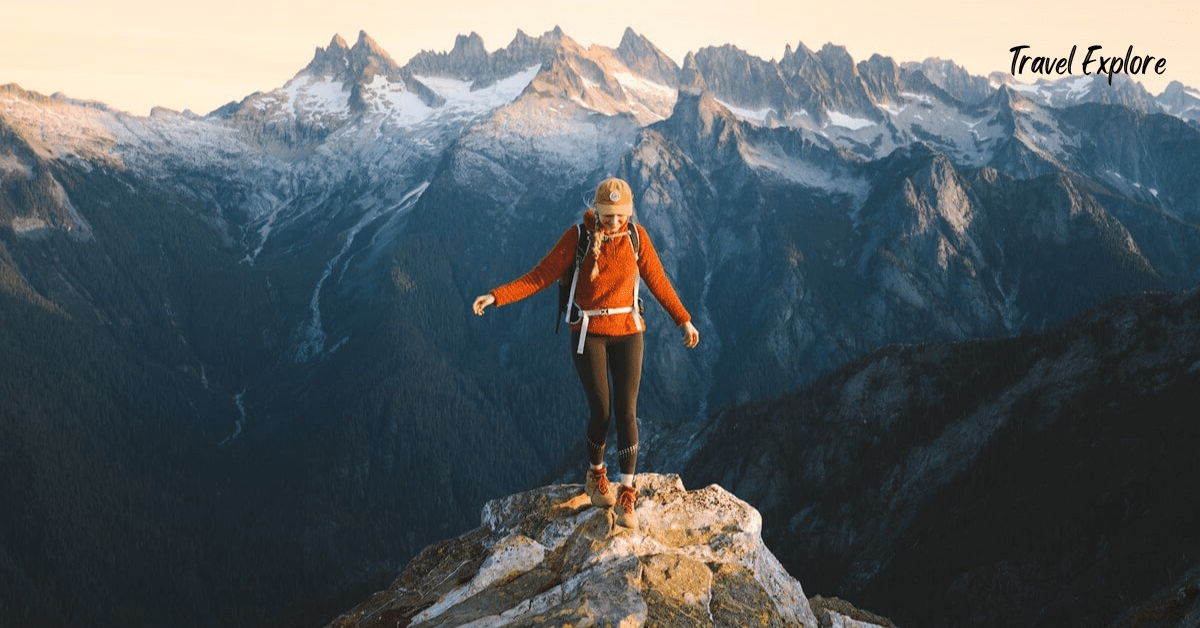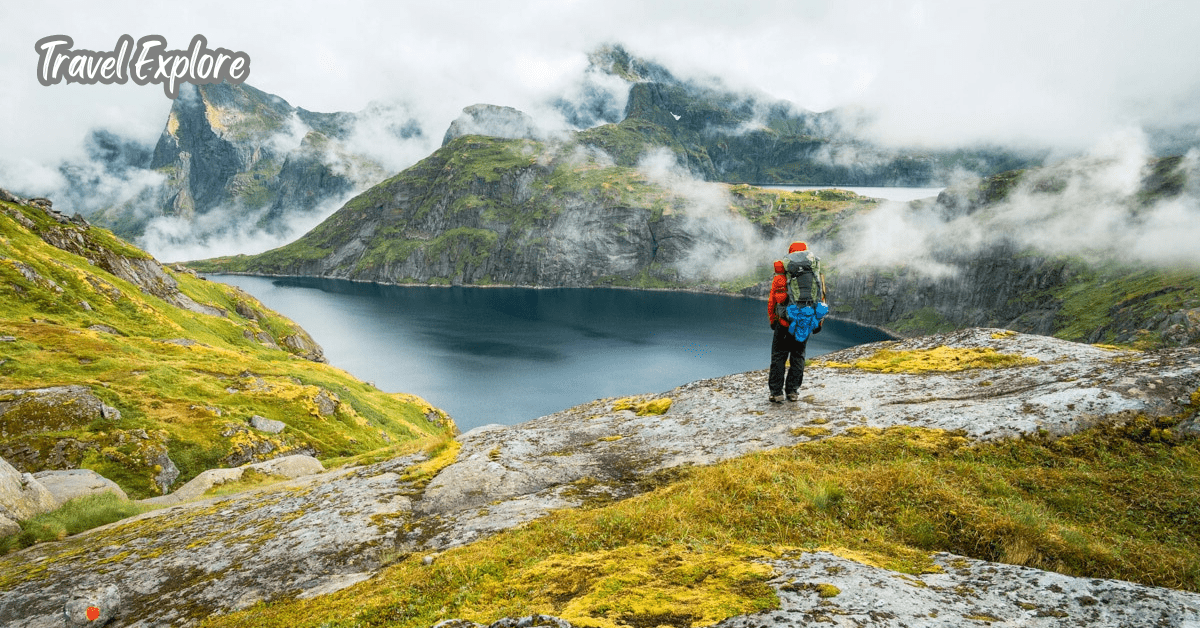What Essential Items should one Pack for a Camping Trip?

Camping trips offer a perfect opportunity to disconnect from the hustle and bustle of daily life and immerse oneself in the beauty of nature. Whether you’re a seasoned outdoor enthusiast or a novice camper, packing the right gear is essential for a comfortable and enjoyable experience.
From shelter and cooking equipment to safety essentials and entertainment items, this comprehensive guide will walk you through the essential items you need to pack for your next camping adventure.
Shelter and Sleeping Gear

When it comes to camping, ensuring a good night’s sleep and protection from the elements is paramount.
Tent
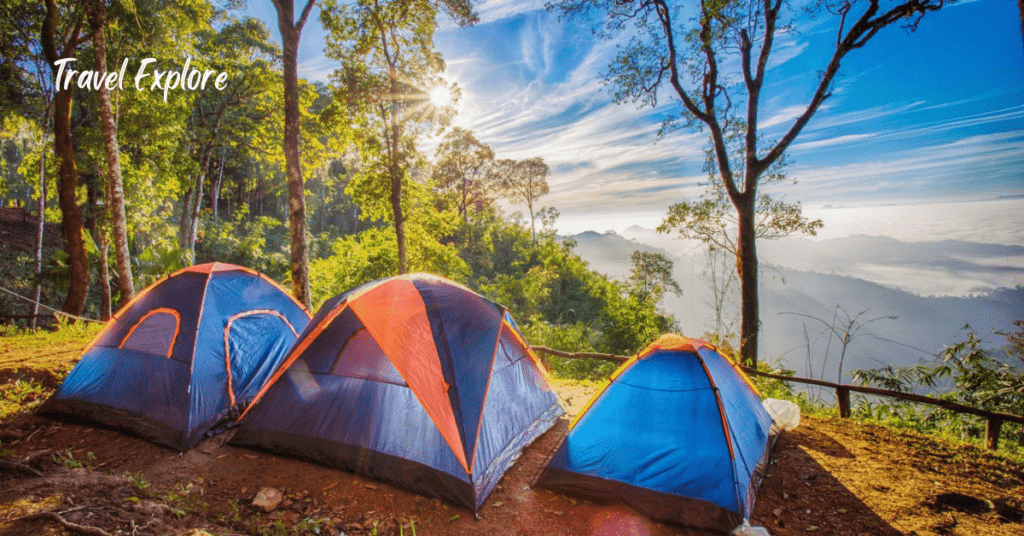
When setting up camp, your tent becomes your essential shelter, providing protection from the elements and a comfortable place to sleep. The choice of tent depends on various factors like the number of people, weather conditions, and personal preferences.
A quality tent typically consists of durable materials such as nylon or polyester for the outer shell and a waterproof floor to keep moisture out. The frame may be made of lightweight yet sturdy materials like aluminum or fiberglass, providing structural support without adding excessive weight.
The design of the tent can vary from traditional A-frame styles to dome-shaped or even tunnel tents, each offering its advantages in terms of stability, interior space, and ease of setup. Ventilation is essential to prevent condensation inside the tent, so most modern tents feature mesh panels and adjustable vents to allow airflow while keeping insects out.
Sleeping gear is equally crucial for a comfortable camping experience. A sleeping bag suited to the expected temperatures is vital, along with a sleeping pad or air mattress to provide insulation from the ground.
Many campers also opt for additional comforts like pillows or inflatable camping pillows for a better night’s rest. Ultimately, the tent and sleeping gear you choose can significantly impact your camping experience, so it’s essential to select equipment that meets your needs and suits the conditions you expect to encounter.
Repair Kit
A repair kit for essential shelter and sleeping gear in camping is a crucial component for any outdoor enthusiast venturing into the wilderness. This kit typically includes items specifically designed to mend or address common issues that may arise with camping equipment.
Firstly, it often contains repair patches or tape suitable for fixing tears or punctures in tents, sleeping bags, or inflatable sleeping pads. These patches are durable and adhesive, capable of sealing small to moderate-sized damages effectively.
Additionally, the repair kit may feature replacement buckles, cords, or zippers to address any hardware failures that could compromise the functionality of tents or sleeping bags. These spare parts ensure that campers can quickly and easily replace broken components, extending the lifespan of their gear.
Furthermore, a repair kit might include adhesive sealant for repairing leaks in air mattresses or waterproof coatings for resealing seams on tents to maintain protection against the elements. Overall, a comprehensive repair kit for shelter and sleeping gear is essential for mitigating potential camping mishaps and ensuring a safe and enjoyable outdoor experience.
Cooking and Food Supplies

One of the highlights of camping is enjoying delicious meals cooked over an open flame or portable stove.
Portable Stove or Campfire Cooking Equipment
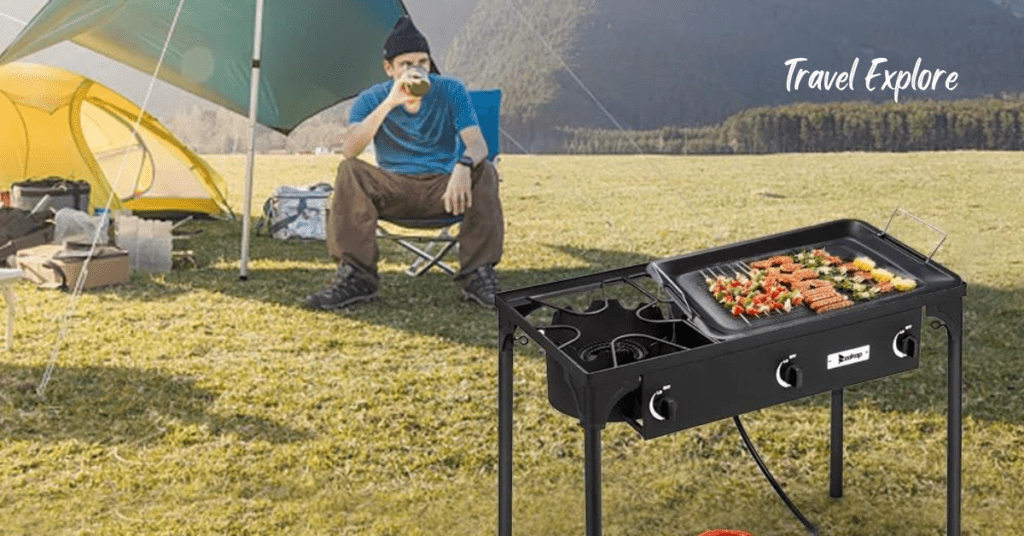
When it comes to outdoor cooking during camping trips, both portable stoves and campfire cooking equipment have their own merits, offering unique experiences and practical considerations.
Portable stoves provide convenience and efficiency, ideal for quick meals or when weather conditions are unfavorable for building a campfire. They come in various types, such as propane, butane, or liquid fuel stoves, each offering different levels of portability, fuel efficiency, and heat output.
Cooking over a campfire evokes a sense of camaraderie and adventure, as meals are prepared amidst the crackling flames and aromatic wood smoke. Campfire cooking allows for a wider range of culinary techniques, from grilling and roasting to simmering and baking using Dutch ovens, grill grates, skewers, and cast iron cookware.
However, it requires more preparation and skill in building and maintaining a fire, as well as adhering to fire safety regulations and Leave No Trace principles.Ultimately, the choice between portable stoves and campfire cooking equipment depends on individual preferences, trip duration, available resources, and environmental considerations.
Food Storage Containers
Food storage containers are essential equipment for camping trips, ensuring food stays fresh, organized, and protected from the elements. When selecting containers for camping, several factors come into play.
First, durability is paramount. Containers should be sturdy enough to withstand rough handling, potential drops, and being packed tightly alongside other gear. Look for options made from materials like high-density polyethylene or stainless steel, which can endure outdoor conditions.
Additionally, consider the size and shape of containers. Opt for stackable designs to maximize space in your backpack or car, and choose sizes that accommodate portioned meals without wasting space.
Tight-sealing lids are crucial for keeping food secure and preventing leaks, especially when transporting liquids or perishable items. Some containers come with built-in compartments or dividers, ideal for organizing snacks or separating raw and cooked foods.
Finally, versatility is key. Seek containers that can double as serving dishes or be used for heating food over a campfire or portable stove. By prioritizing durability, functionality, and versatility, you can ensure your camping food storage containers enhance your outdoor culinary experience.
Clothing and Personal Items
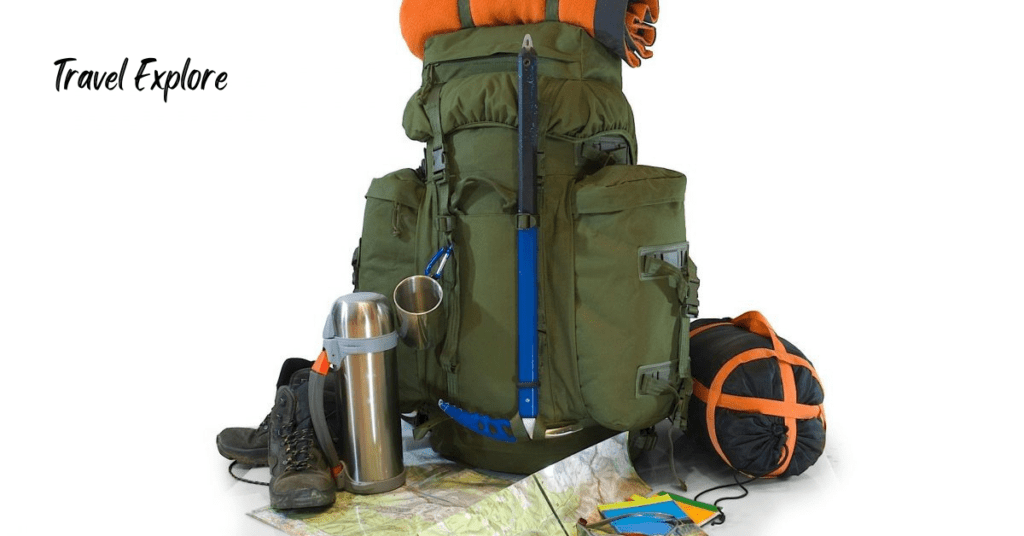
Proper clothing and personal items are essential for staying comfortable and safe during your camping trip.
Layered Clothing
Layered clothing is essential for any camping trip, as it provides versatility and adaptability to changing weather conditions and activity levels. The concept of layering involves wearing multiple thin garments that can be easily added or removed as needed, rather than relying on one thick garment for insulation.
The key to effective layering is to use a combination of three main layers: the base layer, the insulating layer, and the outer shell.Firstly, the base layer sits directly against the skin and serves to manage moisture by wicking sweat away from the body, keeping you dry and comfortable.
It should be made of moisture-wicking material such as merino wool or synthetic fabrics like polyester or nylon. This layer also provides some insulation, particularly if it’s made of a thicker material.
The insulating layer adds warmth by trapping heat close to the body. This layer can consist of fleece jackets, down or synthetic insulated jackets, or even wool sweaters. The thickness of the insulating layer can vary depending on the expected temperatures, but it should be easily removable if you start to overheat.
Finally, the outer shell acts as a protective barrier against wind, rain, and snow. It should be windproof, waterproof, and breathable to prevent moisture buildup from sweat while still allowing body heat to escape.
Outer shell options include waterproof jackets and pants made of materials like Gore-Tex or eVent, as well as windproof softshell jackets.The beauty of layered clothing lies in its versatility. When temperatures drop, you can add extra layers for warmth, and when the sun comes out or you start to exert yourself, you can shed layers to prevent overheating.
Additionally, if one layer gets wet, you can still rely on the remaining layers to keep you warm and dry. Properly layering your clothing ensures that you stay comfortable and protected throughout your camping adventure, no matter what Mother Nature throws your way.
First Aid Kit
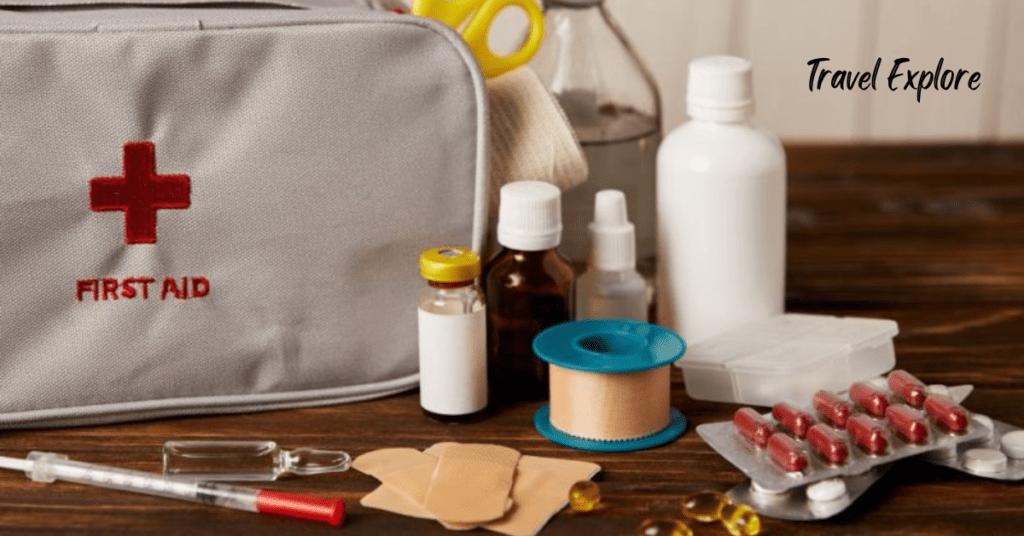
When heading out on a camping trip, a first aid kit is an essential item to have on hand. It’s your safety net for unexpected mishaps in the great outdoors. A well-prepared first aid kit should contain a variety of items to address common camping-related injuries and emergencies.
This includes adhesive bandages in various sizes for cuts and scrapes, sterile gauze pads and adhesive tape for larger wounds, antiseptic wipes or solution for cleaning wounds, and tweezers for removing splinters or ticks.
Additionally, items like scissors, a thermometer, disposable gloves, and a CPR mask can be crucial for more serious situations. Don’t forget to pack over-the-counter medications for pain relief, allergies, and upset stomachs, as well as any prescription medications you may need.
Sunscreen and insect repellent are also must-haves to protect against sunburn and bug bites. It’s important to regularly check and replenish your first aid kit before each trip, ensuring that everything is in good condition and not expired.
With a well-stocked and well-prepared first aid kit, you can enjoy the outdoors with greater peace of mind, knowing you’re ready to handle whatever comes your way.
Safety and Navigation Equipment
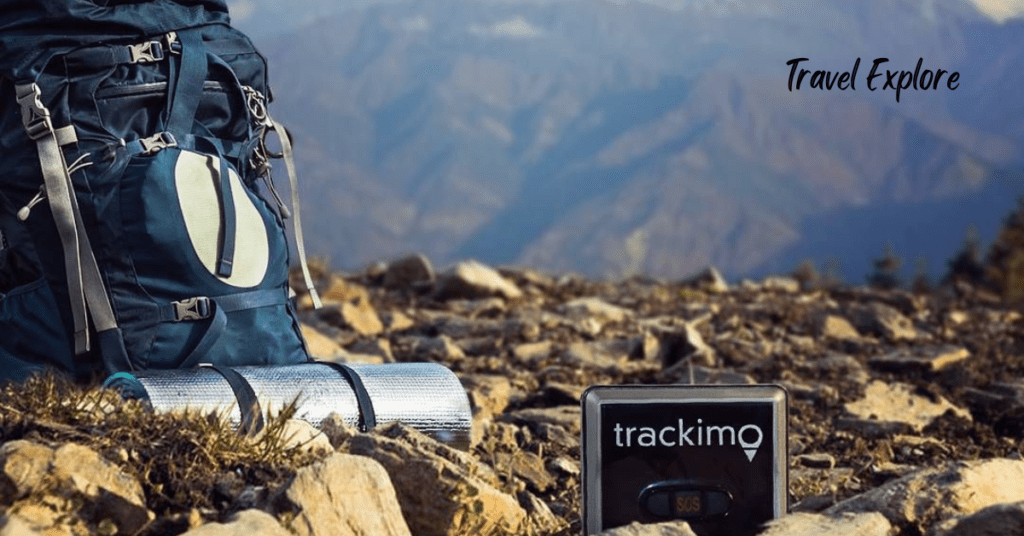
Ensuring your safety and navigating unfamiliar terrain are top priorities when camping in the wilderness.
Map and Compass (or GPS Device)
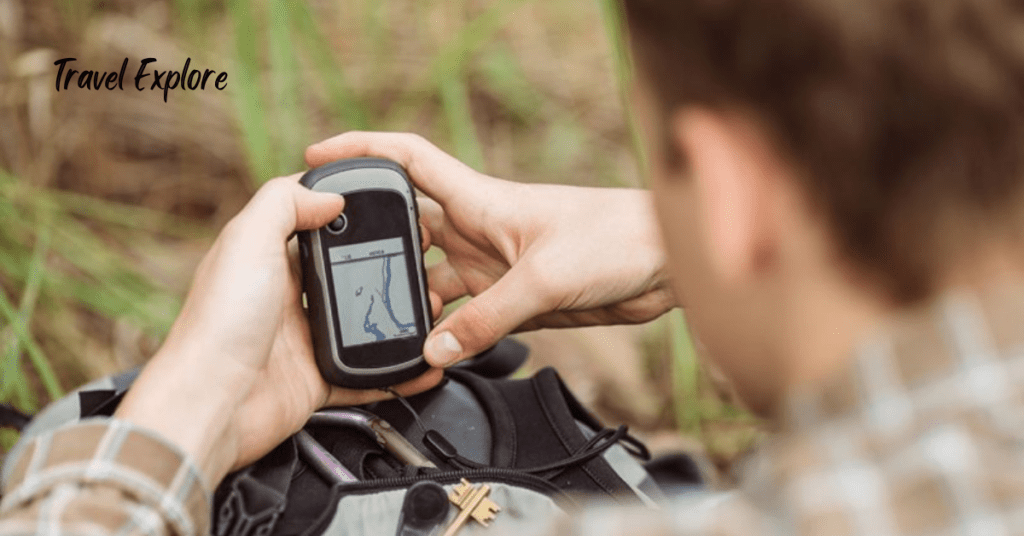
When embarking on a camping trip, whether in the wilderness or a designated campground, having the right navigation tools is crucial for safety and enjoyment. A map and compass, or a GPS device, serve as indispensable aids in orienting oneself and navigating through unfamiliar terrain.
A map provides a detailed representation of the area, including topographical features, landmarks, trails, and potential hazards. It offers valuable information about elevation changes, water sources, and campgrounds, allowing campers to plan their routes effectively.
A good map is typically made of durable material, waterproofed if possible, and scaled to the appropriate level for the area being explored. Accompanying the map, a compass is used to determine direction by aligning its magnetic needle with the Earth’s magnetic field.
This enables campers to establish their position, plot routes, and navigate accurately, especially in environments where landmarks may be sparse or obscured. Learning basic compass skills, such as orienting the map to match the terrain and using the compass to follow a bearing, is essential for safe navigation.
GPS devices offer convenience and real-time tracking, allowing campers to track their progress, mark waypoints, and even receive updated weather forecasts. However, it’s important to remember that GPS devices rely on battery power and satellite signal availability, which may be limited in remote areas or during adverse weather conditions.
Emergency Shelter
When setting up an emergency shelter during a camping trip, several factors need consideration to ensure safety and comfort. First and foremost, assess the surroundings for potential hazards like falling branches, uneven terrain, or areas prone to flooding.
Choose a location that’s elevated, away from water sources, and provides natural protection from wind and rain, such as under thick tree canopies or behind large boulders. If time permits, clear the area of any debris and sharp objects that could puncture your shelter.
Next, determine the type of emergency shelter best suited for the situation. Options range from simple tarp setups to improvised structures using available materials like branches, leaves, and rocks. Tarps are lightweight and versatile, making them ideal for quick setups.
Secure the corners with stakes or rocks and use guy lines to anchor them against strong winds.For more robust shelter, consider building a lean-to or A-frame structure using branches and foliage.
Lay branches against a sturdy support, such as a fallen tree or large rock, to create the frame. Layer leaves, pine needles, or moss over the framework to provide insulation and waterproofing. Regardless of the shelter type, prioritize insulation from the ground to prevent heat loss.
Finally, ensure your emergency shelter is easily visible to search and rescue teams by using brightly colored materials or signaling devices. Keep essential items like a first aid kit, water, food, and a flashlight within reach.
Conclusion & Recap
Packing the right essentials for a camping trip is essential for ensuring a safe, comfortable, and enjoyable outdoor experience. From shelter and bedding to cooking gear and safety equipment, each item plays a crucial role in making your camping adventure a success.
Shelte, Bedding, Clothing, Cooking Gear, Lighting, Safety Equipment packing these essentials and being prepared for various scenarios, you can make the most of your camping trip and create unforgettable memories in the great outdoors.
So, next time you’re planning a camping adventure, refer back to this guide to ensure you have everything you need for a successful and enjoyable experience.
FAQS
What should I do if I encounter wildlife while camping?
Remain calm and avoid sudden movements. Back away slowly and give the animal space. Do not run or turn your back on the animal. Make yourself appear larger by raising your arms or jacket above your head. If attacked, defend yourself with any available object and aim for the animal’s vulnerable areas.
How can I prevent insect bites while camping?
Wear long-sleeved shirts, pants, and socks to minimize exposed skin. Apply insect repellent containing DEET or Picaridin to exposed areas. Avoid wearing strong scents like perfume or scented lotions, as they can attract insects. Consider using mosquito nets or screens for additional protection around sleeping areas.
What should I do if it rains during my camping trip?
Ensure your tent is properly pitched and has a rainfly to keep water out. Pack waterproof clothing and gear to stay dry during outdoor activities. If conditions become unsafe, seek shelter in your vehicle or a sturdy structure until the weather improves.
How do I stay safe around a campfire?
Always supervise the campfire and never leave it unattended. Keep a bucket of water or sand nearby for extinguishing the fire. Avoid building fires under overhanging branches or near flammable materials. Completely extinguish the fire before leaving the campsite or going to sleep.
What should I do if someone in my camping group gets injured or falls ill?
Assess the situation and provide first aid as needed. If the injury or illness is severe, call emergency services immediately or seek assistance from nearby campers or park rangers. Administer CPR or basic life support techniques if trained to do so. Stay calm and reassure the affected person while awaiting help.
